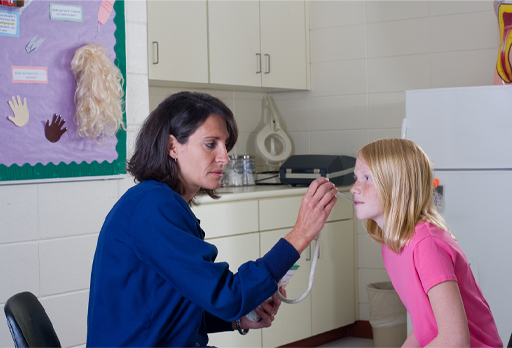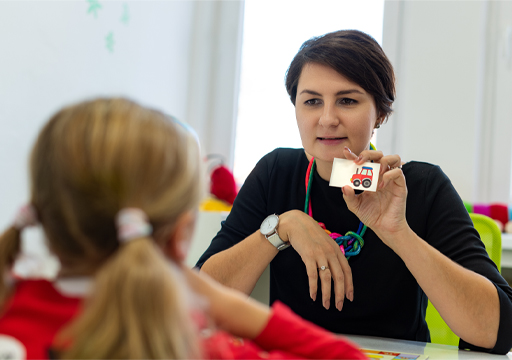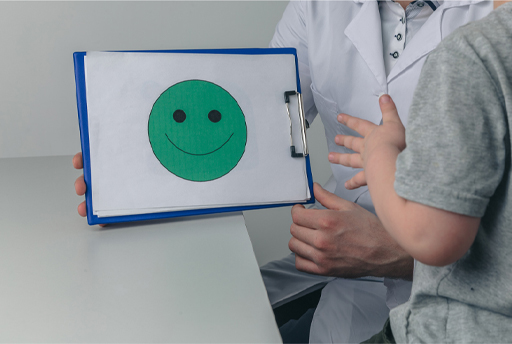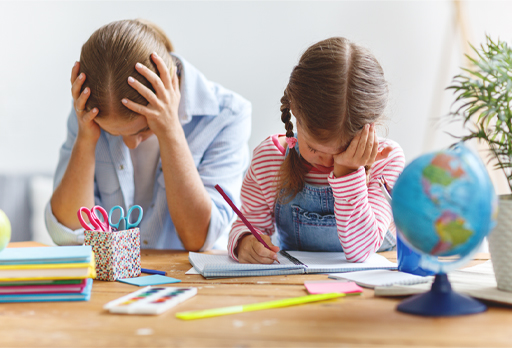Use 'Print preview' to check the number of pages and printer settings.
Print functionality varies between browsers.
Printable page generated Friday, 21 November 2025, 7:28 AM
Session 6: Professional support for children and their mental health
Introduction
During the previous sessions, you have seen that there are many systems around the child and their family that can support a child’s mental health. Within the wider community, therapy and support can be in the form of community or clinic-based as well as hospital (including inpatient) health services. Other valuable support can be via social care or education professionals working for schools, local authorities and charities. Working together with several different professionals and agencies can yield benefits in terms of a child’s mental health, but also some challenges, and you will consider these points.
In this session, you will explore some of the key principles of working with professionals or agencies and discover why multidisciplinary working is important to help support and improve children’s mental health.
Now listen to the audio introduction to this session.
Transcript: Audio 1
By the end of this session, you will be able to:
- understand some of the roles of key health, education and social care professionals who support children’s mental health and wellbeing within the community
- have knowledge of referral processes to services such as Child and Adolescent Mental Health Services (CAMHS)
- explain many of the principles, benefits and challenges of working with other professionals as part of an interdisciplinary approach to children’s mental health
- reflect on the ways in which voluntary organisations such as Home-Start and other statutory services can work together to support the wellbeing of young children and their families.
1 Professionals involved in children’s mental health
There are many health and social care professionals who work to support, treat and ultimately to improve the mental health of children.
Here are examples of professionals who may work with children, and their roles and responsibilities.
Educational psychologists: have studied psychology and have taken additional training and study to specialise in working with children and families in education settings. Psychologists are not medical doctors (which include psychiatrists) and therefore do not prescribe medication. They can assess children and recommend interventions to support children experiencing social and emotional difficulties.
Activity 1 The role of an educational psychologist
Watch the following interview with Liz talking about her work as an educational psychologist (about 5 minutes). Then reflect on each of the questions that follow and make a note of your responses. Watch the clip a few times if that helps you recall what was said.

Transcript: Video 1
Health visitor: a registered general nurse who has done additional training to become a registered health visitor. Their role is primarily public health orientated and specifically focuses on working with children aged 0–5 years and their families.
Psychiatrists: medical doctors who have taken further training to study the speciality of psychiatry. Child and adolescent psychiatrists have specialised further and work with children with mental health conditions in both the community and inpatient mental health units. Psychiatrists can diagnose mental health conditions, prescribe medication, provide psychotherapy (i.e. talk-based therapies) and make recommendations for other interventions. They usually work in NHS-funded multidisciplinary teams with other professionals, including mental health nurses.
School nurse: a registered nurse who has done additional postgraduate training to become a specialist in children’s physical and mental health.
Social workers: support children and their families, helping to protect children’s rights and safeguarding children. They build relationships between agencies and help advocate for the child and ensure they receive the formal supports and resources that they are entitled to.
Special educational needs coordinators: often referred to as SENCOs. This role is statutory as part of the Special Education Needs and Disability (Department for Education and Department for Health and Social Care, 2014) legislation, which requires education settings to have a designated teacher who coordinates the special educational needs of children.
Activity 2 The role of the SENCO
Watch the following clips from an interview with Christine about her role as a special educational needs coordinator. You can either watch the clips all together or one at a time at your own pace.
Teaching assistants: perform many important roles within schools, either working alongside the class teacher with targeted children who have special needs, or with small groups of children to help boost maths and literacy skills in particular. In more recent years their role has expanded, and some teaching assistants with higher-level formal qualifications have received further training to help them to nurture the wellbeing of children throughout the school.
Mental health nurses: Some mental health nurses have received further training and work in Child and Adolescent Mental Health Services (CAMHS) either in the community or in inpatient units, making them experts in supporting children with mental health conditions. Other health and social care professionals also specialise in child and adolescent health and work in CAMHS too, including social workers, practitioner psychologists (including clinical psychologists), child psychotherapists (specialists in talk-based therapies) and occupational therapists.
Therapist: A range of specialists who are skilled in a particular therapy or field, which can include the disciplines of speech and language therapy, psychotherapy, family therapy (where a therapist works together with the family unit in systemic therapy) and occupational therapists. All can make a valuable contribution to children and their mental health.
2 Getting help from other professionals: making referrals
Some children will develop a mental health condition that is more severe or complex and requires support that goes beyond the skills, knowledge and professional boundaries of those who are already working with the child within their pre-school or school. When this situation arises, a professional may decide that a child is likely to need to access specialist assessment and subsequent interventions such as medication or talk-based therapies.
In Session 1, you learned about the work of CAMHS. These are multidisciplinary teams made up of health and social care professionals who have received additional ‘on-the-job’ training, with many also having postgraduate qualifications in relation to providing comprehensive mental health assessment, treatment and support to children and their families. In order to access CAMHS, a professional – usually a general practitioner, sometimes a school nurse or teacher – can make a referral to a child’s local CAMHS.
CAMHS are organised differently around the UK and delivered by the National Health Service. Details of how they are organised in your local area can be found online. As a professional referring a child to CAMHS, or another agency, it is important to involve the parents and gain their consent, so that they are fully aware that a referral is being made. It is also important to provide as many relevant details as possible in the referral letter, using language that is clear and non-judgemental. Involving parents will also help to gather important details and information that will help ensure an accurate referral is made to CAMHS. Given that CAMHS in the UK receive many referrals a year, and that they have limited capacity, some children that are referred are not seen in CAMHS. However, the child’s local CAMHS should be able to identify other forms of support that can be accessed to assist the child and/or their family.
3 Interdisciplinary working
When professionals from different specialisms or disciplines work together to support children and their mental health, this is often described as ‘interdisciplinary working’.
3.1 Key principles of interdisciplinary and multi-agency working
Earlier in this session, you learned about some of the professionals who can be involved in providing treatment and support to children with mental health conditions. When several different professionals work together, this is described as interdisciplinary (or sometimes multidisciplinary) working, meaning that the professionals come from different disciplines to form a team of people who support the child and their family.
It is common for a team who work together to refer cases to other agencies; for instance, it may be appropriate to refer a child to a voluntary organisation for further support, as will be discussed in Activity 4. Other agencies may include education settings. Therefore, the combination of different disciplines of health professionals and representatives from other agencies, such as education settings, can be described as multi-agency working.
3.2 Benefits of interdisciplinary and multi-agency working
There are many benefits to having different disciplines of professionals who are specialists in children’s mental health.
Each discipline will have skills and knowledge about how their discipline can help improve the mental health of the children they are working with. For example:
- A psychiatrist will know if medication is appropriate (for most childhood conditions medication is only reserved for a selected number of conditions that are severe and enduring) and is applicable to prescribe.
- An educational psychologist will have the skills and knowledge to be able to assess children’s behaviour and will be able to work with educators and parents to implement a plan (often referred to as an Individual Education Plan/IEP) that helps them to understand and manage their behaviour.
When another agency is involved, this can bring in further skills and knowledge.
Educators – for example, a practitioner in an early childhood setting – are likely to know a child very well because they spend a lot of time together. Practitioners work with children in an environment that is familiar to them; they will be able to give a different perspective about the child’s behaviour. They are likely to know the parents or carers and are likely to have knowledge of the family, and possibly a positive working relationship with them, all of which may be useful in planning the treatment of the child’s mental health.
3.3 Challenges of interdisciplinary and multi-agency working
There can be challenges in a group of different professionals all coming together. There may be up to 10 different disciplines and agencies working with a child and family; therefore it is not surprising that each professional may have different priorities and perspectives, and sometimes these can be conflicting. For example, CAMHS may be discharging a child with no further follow-up, and other professionals may think the discharge is premature.
Communication can be a key issue when different disciplines come together to work with a child and family. It is important that all professionals have an overview of the child’s mental health, but gaining the big picture can be difficult for a range of reasons. Professionals can end up feeling as if they are holding an individual piece of a jigsaw, and may not be able to come together with other professionals to see how their piece of the jigsaw contributes to the big picture. This approach is often referred to as working in a silo, meaning that there is a lack of information sharing and collaboration.
There are often good reasons why communication can be a barrier to effective interdisciplinary working. These reasons include:
- Confidentiality: there may be concerns about what is confidential information. However, confidentiality is often interpreted as not passing on any information. In reality, confidentiality means that information should be shared on a ‘need to know’ basis with relevant colleagues. Professional codes of conduct are often bound by a need for confidentiality and this too can make professionals cautious about passing on information.
- Location: the different professionals involved may work for different employers, are likely to work in different locations and have different line management.
- Staff availability can be a barrier to effective communication. Staff may be unavailable (e.g. when a teacher is in class during most of the working day) or on leave.
3.4 Interdisciplinary and multi-agency working: ingredients for success
Different professionals, or disciplines, working together is an effective way of ensuring that children with mental health problems and their families get the best support possible. However, there are some ingredients that can make working together very successful.
Activity 3 The ingredients that make up successful interdisciplinary approaches
In the previous sections, you have explored the barriers to and challenges of interdisciplinary working. Now make a list of what you think are the ingredients for success when several professionals from different disciplines in different locations are working with a child and the family to support the child’s mental health.
Discussion
You may have included some of the following on your list:
- Good communication: for example, by attending meetings and being prepared to be able to make a ‘positive contribution’, responding to requests for information.
- Knowledge and understanding of others’ roles, being aware that different professionals may have different priorities and constraints.
- Commitment from all to be united in achieving the best outcomes for the child and the treatment and management of their mental health.
- Proactive approach with a focus on identifying solutions, some of which may require some creative thinking, that will help to remove or reduce barriers.
4 Working with voluntary organisations
Voluntary organisations can play a significant role in supporting children’s mental health by working with families. In a similar way to children, parents can struggle with events in their lives that can make it difficult for them to cope with parenting their children.
Events such as the death of a family member or friend and the associated grief linked to the bereavement can understandably have a negative impact on parents (and children) and their mental health. There are several voluntary organisations that offer advice and support for families in times of difficulty, including after a bereavement; for example, CRUSE supports bereaved families. Home-Start UK offers more general support to children and families who are experiencing difficulties for a range of reasons.
Some of Home-Start’s work is focused on supporting mothers who are experiencing post-natal depression. Mothers with post-natal depression are more likely to have difficulty forming an early attachment with their baby, and this in turn can impact on their children’s mental health.
Activity 4 Family support through Home-Start
Read the following case study by a colleague at The Open University who is also a volunteer for Home-Start. The case study is about Kasia and Janek and their children. Then consider your responses to the questions that follow.
Case study: Kasia and Janek
Kasia and her husband Janek live in a flat in a rural village in the south of England, where they have been for almost a year with their children, Lena, aged two-and-a-half years, and a baby boy, Leon, aged three months.
The couple have a car and Janek drives to work each day, but Kasia does not drive. They did not have any friends or family locally, having moved from London. Kasia had become isolated and was feeling anxious and depressed, finding it difficult to leave the first floor flat with two young children. She often felt tearful. Consequently, the children spent very little time outside the flat or in the company of different people.
Kasia’s health visitor referred the family to Home-Start as she was concerned about Kasia’s wellbeing and that of the two children. Lena was beginning to speak in Polish but had only a few words. Some of her physical skills appeared slow to develop. She didn’t run or jump or attempt to kick a ball. Indeed, it was difficult to allow or encourage such activities without disturbing the people in the flat below, who worked nights. Kasia told her Home-Start volunteer that she would like help in getting out and about and making new friends.
Over a nine-month visiting period, the Home-Start volunteer and the family started by walking to the local shop and duck pond together, encouraging Lena to help look for items on the shelves, chat to the shop assistant and hand over money to pay. Lena fed the ducks and chatted about them, Leon watching eagerly with waving hands.
They progressed to finding out about a parent and toddler group in the local church, which they attended together weekly. The Home-Start volunteer helped broker communication between Kasia and other local mothers while helping the children to take part in the play activities, including a toddler slide and climbing frame. Every session ended with nursery rhymes and singing, which Kasia and the Home-Start volunteer repeated with the children once they had arrived back at the flat.
By the end of the nine months, Kasia had made two new friends with children locally. They helped her to use the local bus service for outings with the children and to visit a preschool, where Lena started when she was three.
Questions for reflection:
- In what ways did the Home-Start volunteer help to support Kasia’s health and wellbeing?
- In what ways did the Home-Start volunteer’s help contribute to the children’s health and wellbeing?
- What skills did the Home-Start volunteer use to help the family?
- What local resources helped the family’s health and wellbeing?
Discussion
You may have thought that the Home-Start volunteer helped Kasia to develop confidence simply by helping her to leave the flat. Clearly, Kasia was worried about disturbing the neighbours below, who may have become annoyed with the family. This may have led to her limiting the children’s movement in the flat, which meant that they were not given the opportunity to develop their physical skills. Getting out of the flat helped Kasia to meet new people and to interact within her local community.
The Home-Start volunteer showed that she had patience and she didn’t rush Kasia. She had carefully worked out a step-by-step approach to supporting Kasia, starting with walks to the shop and the duck pond and ending by making new friends. During the nine months, she supported Kasia to make friends by initiating conversations with other mothers and then drawing Kasia in to the chats. As Kasia’s first language isn’t English, she may have helped Kasia’s confidence by interpreting some words or explaining parts of the conversation.
The local resources helped the whole family. The health visitor is an employee of the National Health Service, but part of their role is to offer support to young children from birth to five years of age. By recognising that the family could benefit from support and being aware that Home-Start was available in the local area, she was able to make a referral. The neighbourhood had the duck pond, which was a draw for the children and a gentle introduction to the area for Kasia. The local shop also gave Kasia the opportunity to socialise and learn more about living in England.
Fortunately, the family were comfortable going to a group based in a local church (some families would not be willing to attend sessions conducted in a place of worship) as the church offered a parent and toddler group, giving parents the opportunity to come together and socialise. And very importantly, the parent and toddler group was well-resourced with suitable play equipment and toys, which gave the children the opportunity to develop their physical skills: an opportunity that was not available at home.
The songs and rhymes that Kasia and the children learned gave them an opportunity to do an enjoyable activity together, thus helping them to bond. The rhymes also helped the family to develop their English and for the children to develop their communication and language skills.
As well as illustrating the work of a voluntary service, the case study highlights how, because the health visitor was aware of the benefits of a voluntary agency, she was able to draw on the services of the Home-Start volunteer to support the whole family to improve their wellbeing.
5 Personal reflection
At the end of each session, you should take some time to reflect on the learning you have just completed and how it has helped you to understand more about children’s mental health. The following questions may help your reflection process each time.
Activity 5 Session 6 reflection
- What did you find helpful about this session’s learning and why?
- What did you find less helpful and why?
- What are the three main learning points from the session?
- What further reading or research might you like to do before the next session?
6 This session’s quiz
Well done – you have reached the end of Session 6. You can now check what you’ve learned this session by taking the end-of-session quiz.
Open the quiz in a new tab or window and come back here when you have finished.
7 Summary of Session 6
During this session, you have explored some of the benefits of a range of different professionals working together to support children who are experiencing mental health difficulties and their families. You have considered the importance of working in effective ways with other professionals. You have also thought about the importance of voluntary organisations who can support children and families to improve their wellbeing and mental health, illustrated by the case study of Home-Start.
You should now be able to:
- understand some of the roles of key health, education and social care professionals who support children’s mental health and wellbeing within the community
- have knowledge of referral processes to services such as Child and Adolescent Mental Health Services (CAMHS)
- explain many of the principles, benefits and challenges of working with other professionals as part of an interdisciplinary approach to children’s mental health
- reflect on the ways in which voluntary organisations such as Home-Start and other statutory services can work together to support the wellbeing of young children and their families.
In the next session, you will look at the effects of play therapy and the role of the trained counsellor in supporting children’s mental health and wellbeing. You will be introduced to activities to which children seem to respond well. You will also have the opportunity to reflect on the carefully guided use of prescribed medication for children to treat a small number of mental health conditions, and how more trauma-informed schools and organisations are emerging.
You can now go to Session 7 .
References
Acknowledgements
This course was written by Jackie Musgrave and Liz Middleton. It was first published in October 2020.
Except for third party materials and otherwise stated (see terms and conditions), this content is made available under a Creative Commons Attribution-NonCommercial-ShareAlike 4.0 Licence.
The material acknowledged below is Proprietary and used under licence (not subject to Creative Commons Licence). Grateful acknowledgement is made to the following sources for permission to reproduce material in this course:
Images
Figure 1: Brian Eichhorn; Shutterstock.com
Figure 2: ABO PHOTOGRAPHY; Shutterstock.com
Figure 3: Burdun Iliya; Shutterstock.com
Figure 4: Viktoria Kurpas; Shutterstock.com
Figure 5: Evgeny Atamanenko; Shutterstock.com
Figure 6: Yulia Grigoryeva; Shutterstock.com
Every effort has been made to contact copyright owners. If any have been inadvertently overlooked, the publishers will be pleased to make the necessary arrangements at the first opportunity.
Don't miss out
If reading this text has inspired you to learn more, you may be interested in joining the millions of people who discover our free learning resources and qualifications by visiting The Open University.





